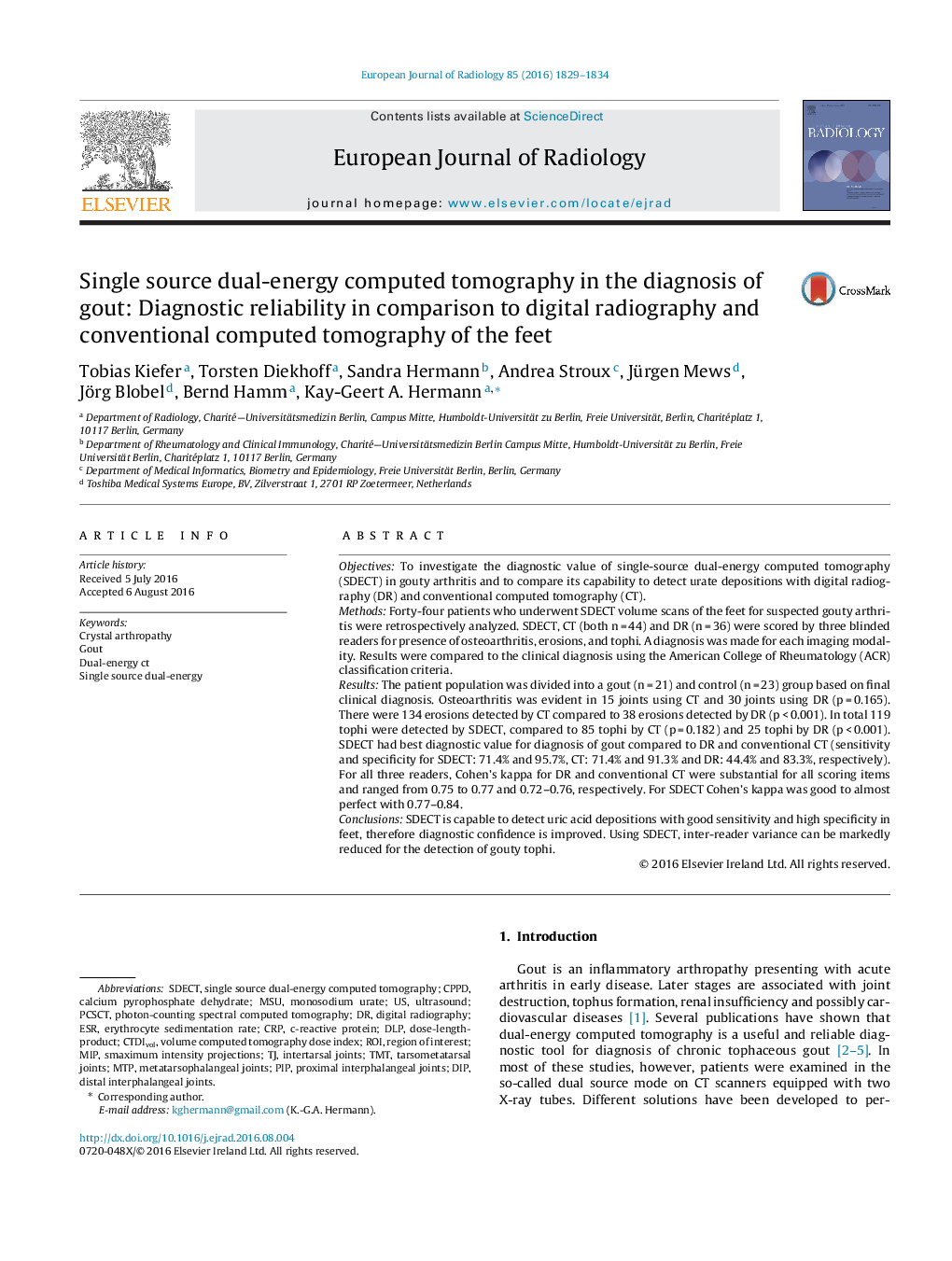| Article ID | Journal | Published Year | Pages | File Type |
|---|---|---|---|---|
| 4224918 | European Journal of Radiology | 2016 | 6 Pages |
ObjectivesTo investigate the diagnostic value of single-source dual-energy computed tomography (SDECT) in gouty arthritis and to compare its capability to detect urate depositions with digital radiography (DR) and conventional computed tomography (CT).MethodsForty-four patients who underwent SDECT volume scans of the feet for suspected gouty arthritis were retrospectively analyzed. SDECT, CT (both n = 44) and DR (n = 36) were scored by three blinded readers for presence of osteoarthritis, erosions, and tophi. A diagnosis was made for each imaging modality. Results were compared to the clinical diagnosis using the American College of Rheumatology (ACR) classification criteria.ResultsThe patient population was divided into a gout (n = 21) and control (n = 23) group based on final clinical diagnosis. Osteoarthritis was evident in 15 joints using CT and 30 joints using DR (p = 0.165). There were 134 erosions detected by CT compared to 38 erosions detected by DR (p < 0.001). In total 119 tophi were detected by SDECT, compared to 85 tophi by CT (p = 0.182) and 25 tophi by DR (p < 0.001). SDECT had best diagnostic value for diagnosis of gout compared to DR and conventional CT (sensitivity and specificity for SDECT: 71.4% and 95.7%, CT: 71.4% and 91.3% and DR: 44.4% and 83.3%, respectively). For all three readers, Cohen’s kappa for DR and conventional CT were substantial for all scoring items and ranged from 0.75 to 0.77 and 0.72–0.76, respectively. For SDECT Cohen’s kappa was good to almost perfect with 0.77–0.84.ConclusionsSDECT is capable to detect uric acid depositions with good sensitivity and high specificity in feet, therefore diagnostic confidence is improved. Using SDECT, inter-reader variance can be markedly reduced for the detection of gouty tophi.
